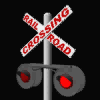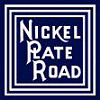

|
|


|
|
|
|
|
|
|
|||
|
|
|
|
|
|
|
|
The History of the N&N RR The
Beginning In
the early 1800s a German immigrant named Henry S. came to a tiny
settlement called Grer in the northwest corner of Knox County, Ohio . He was a builder and contractor for bridges, harbors and piers.
His
first project was to build a sawmill at the north end of Greer River and open
a channel across the sandbar that separated the little river from Mohican
River. This access to the “Big River” made it possible to ship his
lumber on schooners to Danville, Wooster, Akron, and Cleveland. Progress
As
time went on Henry S had to go farther and farther from the mill for his
timber, so in 1880 he started building a short line railroad. He laid
wooden rails capped with strap iron about two inches wide for this
railroad. The first engine reportedly had an upright boiler but it is
unknown whether it was a geared or rod type. The Major railroads that cross or meet are the Pennsylvania Railroad, Baltimore & Ohio, Erie, along with a few short lines. the traffic is enough to keep those roads operating into the future. Lay
of the Land There
are slight rolling hills around Greer, so the new logging road had to
cross many ravines. A pile trestle across one of them
was 450 feet long and 65 feet high. Business
Boomed Henry
S.'s business boomed and he soon needed a better railroad. In 1893 he formed he Henry
S. Land and Lumber Co. with seven stockholders and a
capitalization of $123,000. The company was issued a charter in 1895 to
operate a standard gauge railroad from Greer to Loudonville, about 17 miles
away where it interchanged with the Chicago & West Michigan Railroad.
Others could now ship lumber all year around. Growth
Continues In 1896 the line was extended another five miles to the logging town of Akron, where it interchanged with the Baltimore & Ohio and the Wheeling & Lake Erie Railroads. The cost of the entire project was $150,000.00. The
railroad's early standard gauge motive power and rolling stock consisted
of one Heavy Mountain Class, 15 flat cars and
35 log cars. A car known as the Kittimer Way Car, which was used partly
for passengers, was added later. Still later a full passenger coach was
acquired along with three 4-6-0 locomotives. |
|
|
|
|
N&N RR is Copyright (©) 1999 - 2015. No part of this site may be reproduced with express permission from the copyright holders. This site works best using the latest browsers, with a screen resolution of 800x600 or higher. Hosting provided by RCB Enterprises. |
|